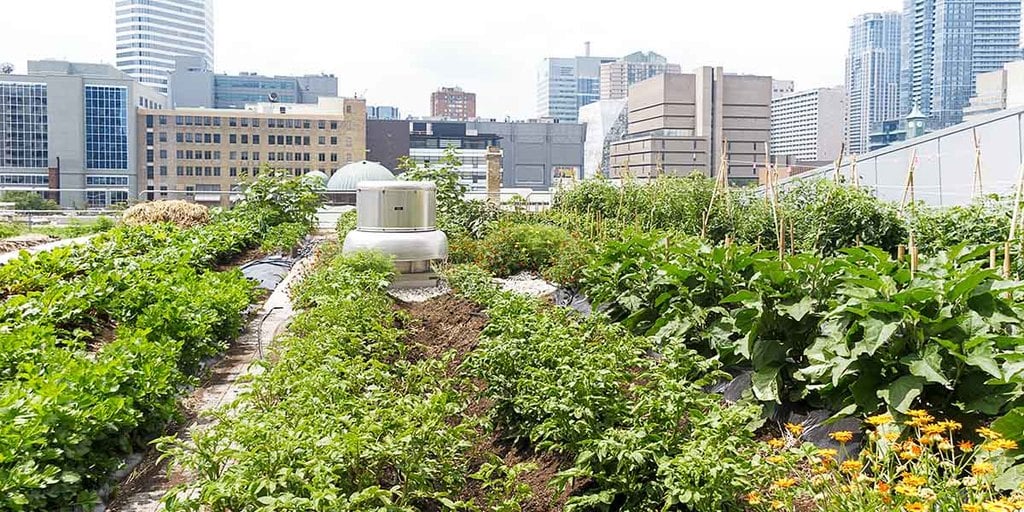More About City Blooming
More About City Blooming
Blog Article
Not known Details About City Blooming
Table of Contents7 Simple Techniques For City BloomingGet This Report about City BloomingCity Blooming for BeginnersCity Blooming Fundamentals ExplainedThe Facts About City Blooming Revealed
Intrigued in expanding food for sale in the City of Chicago? Below is a listing of frequently asked questions relating to the regulations and guidelines that growers should think about when preparing a city agriculture project.
The zoning modification does not modify any various other codes handling composting, building permits, buying or leasing City possessed residential property, service licenses or environmental contamination. There are existing codes that manage these problems and they remain completely effect and might apply to your task. Neighborhood gardens are commonly owned or handled by public entities, civic companies or community-based companies and maintained by volunteers.
Urban farms grow food that is planned to be offered, either on a not-for-profit or for-profit basis. Due to their commercial objective, metropolitan ranches call for a company certificate. Yes. A neighborhood yard is allowed to market surplus create that was grown on website if the sales are accessory or secondary to the yard's main function defined over.
All about City Blooming
Composting is permitted but just for plant product that is produced and utilized on site. The amount of garden compost material can not go beyond 25 cubic yards at any kind of given time according to the standards in 7-28-715 of the City's Municipal Code. Yes. Due to the fact that the soil at the majority of new yard sites needs amending, garden compost, dirt, timber chips, or various other products can be gotten to create or enhance the expanding room - fruit and vegtables.

If a building license is called for after that the hoophouse will certainly be considered an accessory building. You can learn more about the structure authorization requirements by calling the Department of Structures. The 25,000-square-foot dimension limit is meant to stop a single community garden from dominating an offered block or interfering with the block's existing domestic or business character.
The limitation does not apply to yards found in Public Open Area (POS) districts. Can there be even more than one community yard that is 25,000 square feet on a single block? Fence is not called for, nonetheless, gardens that have big vehicle parking areas may be required to mount fencing or various other landscaping attributes.
Not known Facts About City Blooming
B1 & B2 districts need that all commercial use tasks be performed inside. R districts restrict industrial task. The laws mirror the function and intent of the Zoning Code. Is secure fencing required for metropolitan farms? Yes. Fencings might be needed, in addition to landscape design and screening, for sure auto parking locations and outdoor job or storage space areas depending on location and the particular task happening.
Yes. Urban farms require structure licenses and zoning authorizations prior to building. Various other kinds of city review might be required depending on details frameworks, tasks, size, landscape design, licensing, public health and stormwater administration issues. Many of these needs are identified in the task layout or allowing procedure, nonetheless, the applicant might be accountable to independently recognize specific licenses or permits that might be called for.
Yes. The sort of license is determined by what is occurring at the site. The Department of Company Affairs and Customer Security can aid identify the particular sort of company license that's needed. Yes. Off road car parking is needed for most commercial projects in Chicago. The called for number of car park rooms is based on the variety of employees working with site and not the square footage of the expanding room.
About City Blooming

An urban farm can offer garden compost material created on website, however, the procedure should conform with the regulations in 7-28-715 of the Chicago Municipal Code. Aquaponic systems are enabled indoors on city farms in lots of zoning districts.
As much as five hives or swarms of honey bees might be maintained as an accessory usage. Beekeepers need to sign up with the Illinois Division of Agriculture. For even more info concerning the proposed zoning change you may contact the Division of Housing and Economic Growth, Bureau of Planning and Zoning at 312.744.8563.
Farming in cities and city locations An urban ranch in Chicago. Urban agriculture refers to numerous methods of growing. http://prsync.com/city-blooming/, handling, and distributing food in urban areas. The term also applies to the location activities of animal husbandry, tank farming, beekeeping, and gardening in a metropolitan context. Urban farming is differentiated from peri-urban agriculture, page which happens in backwoods at the edge of residential areas.
What Does City Blooming Do?
, that look for to form social networks established on a shared ethos of nature and area holism. These networks can develop by means of formal institutional support, becoming incorporated into local town preparation as a "shift community" motion for lasting city advancement.
The extra straight accessibility to fresh vegetable, fruit, and meat products that might be realised with urban farming can improve food security and food safety while decreasing food miles, bring about lower greenhouse gas discharges, thus adding to environment change reduction. Several of the initial evidence of city agriculture comes from Mesopotamia.
Report this page